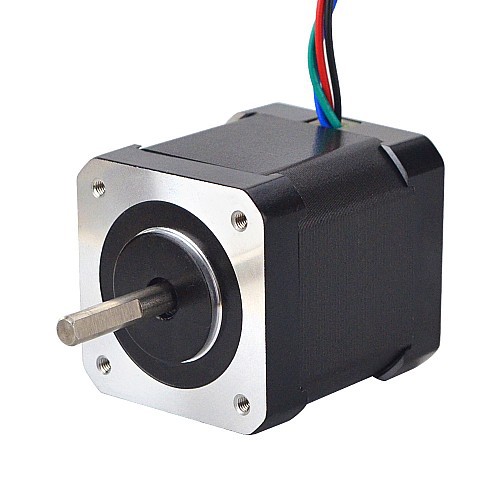1. What is a Stepper Motor?
Stepper motor is a commonly used precision motor that can rotate at a certain angle through pulse signals. Stepper motors are widely used in a variety of automation fields, including control systems, photographic equipment, and medical equipment.
2. Characteristics of Stepper Motors
2.1 High precision
Stepper motors can achieve very high positioning accuracy when stopped, so they can be used in applications that require high-precision control and positioning.
2.2 Stability
The output speed of the stepper motor can be very stable, which ensures that it can maintain a relatively constant output torque under load.
2.3 Good low speed adjustment performance
Stepper motors can achieve very small angle control, which also makes speed control very precise, especially when running at low speeds.

3. Output Torque of Stepper Motor
The output torque of stepper motor includes static torque and dynamic torque.
3.1 Static torque
The static torque of a stepper motor refers to the resistance of the motor shaft to the associated load without increasing the current. During operation, the stepper motor can withstand high static torque and its positioning accuracy is very high.
3.2 Dynamic torque
The dynamic torque of a stepper motor refers to the resistance of the motor shaft to the relevant load after adding current. Dynamic torque is usually lower than static torque and decreases as rotational speed increases.
4. The Difference Between Static Torque and Dynamic Torque
The main difference between static torque and dynamic torque is whether current is applied. The static torque of a stepper motor refers to the maximum torque it can withstand without increasing the current, while the dynamic torque refers to the maximum torque it can withstand after adding current. In practical applications, dynamic torque is often lower than static torque and decreases as the rotational speed increases.
5. Precautions for Stepper Motors
1. The driving method of the stepper motor is achieved through pulse control. When selecting the driver, you need to pay attention to its performance and quality.
2. Stepper motors have high accuracy and stability, but careful debugging and control are required during actual application to ensure that their performance is consistent with expectations.
3. When installing the stepper motor, you need to pay attention to protecting its bearings and performing appropriate lubrication to extend its service life.
6. Summarize
This article introduces the characteristics and output torque of stepper motors, and explains in detail the difference between static torque and dynamic torque. Stepper motors have the characteristics of high precision, stability and good low-speed adjustment performance. In practical applications, attention needs to be paid to issues such as driving methods, careful debugging, and bearing protection.
Discussions
Become a Hackaday.io Member
Create an account to leave a comment. Already have an account? Log In.